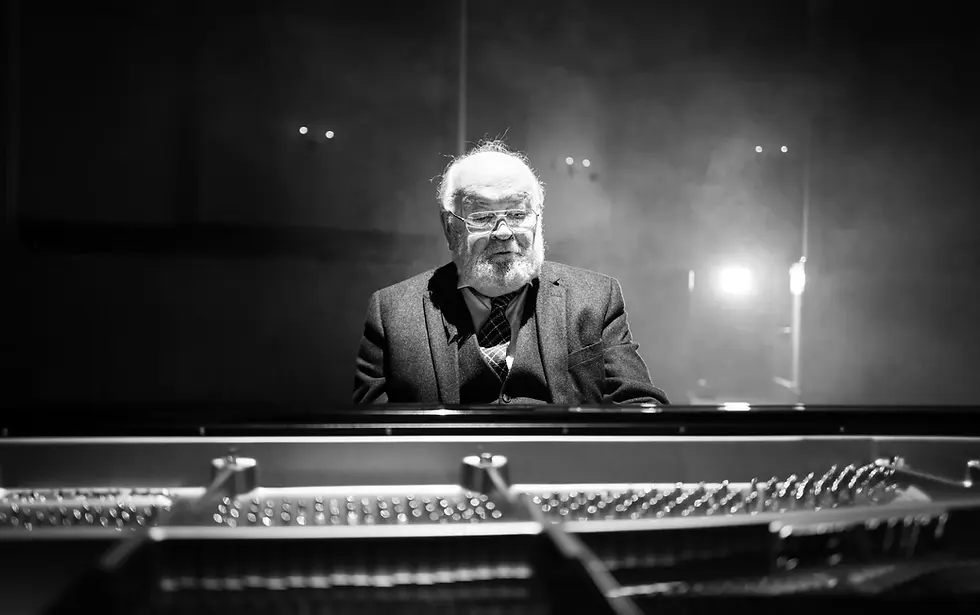Mattheus Smits recalls Bolet & J.Marx
- Blue Pumpkin
- Jan 7
- 3 min read
Updated: Mar 16
After leaving music conservatory [in Utrecht], I continued my piano studies in 1972 with the Dutch pianist Mr. Johan Ligtelijn, who had studied with the Liszt student, Frederic Lamond (who taught for some years in Holland) and with Walter Gieseking. Mr. Ligtelijn told me the Marx concerto was the best new concerto Gieseking had laid his hands upon. Gieseking played many new concerti: Pfitzner, Petrassi, Trapp and of course the two works by Marx. (I regret he never played the Busoni!).
The result was that I started looking for music by Joseph Marx. Mr.Ligtelijn gave me an old leaflet from [the Viennese publisher] Universal with a picture of Marx on the front and a list of his published compositions.
On a trip to Vienna, I visited Universal. I remember that the people working at Universal had to go to a lot of trouble to find what I was looking for.
It was easy to find some Marx songs in "Einzel Ausgabe" but for the Concerto, Castelli Romani, a volume of piano solo works, the Frühlings sonata and the Trio, we had to go into the storage, where it looked like nobody had been there for a long time. Nevertheless, the people at Universal were very helpful to me; they informed me that there was also a book on Marx by Erik Werba, which they did not have but they informed me where I could find it in Vienna.
In 1974, just a few month after his legendary Carnegie Hall recital, I met Jorge. This was easy because Mr. Ligtelijn and Jorge knew each other so I had a good introduction. From the first moment of our meeting, Jorge and I became close friends. I travelled a lot with him when he was on tour in Europe, and I went to stay with him in the USA. Knowing that Jorge loved the music of the late Romantics such as Wagner and Richard Strauss (Jorge recorded one of the Strauss pieces for piano left-hand and orchestra for the Bavarian Radio with the Dutch conductor Koetsier), I mentioned the Marx concerto to Jorge, a work he did not know. The fact that Gieseking played it and that I judged it a fine work triggered Jorge at once.
Back in the States, Jorge somehow managed to find an orchestral score which he looked at carefully and which made him decide to learn the work. I provided him with the 2 piano score, the score of Castelli Romani and Werba book about Marx. As always with Jorge, he learnt and memorised the Marx very quickly. Whenever we met when Jorge was on tour, we discussed the great difficulties of the concerto: how to make the constant harmonic changes flow as a liquid all the way through the concerto; the tempi that keep everything clear for the listener; the pedalling (Jorge's way of pedalling is very different from that of other pianists); the great many build-ups of crescendi; the enormous difficulties in and with the orchestra; and above all - will it be possible for the orchestra also to play very, very softly? Nevertheless Jorge managed all that, and being almost constantly on tour, the Marx matured in his head, heart and soul.
Jorge's decision not to play Castelli Romani was a wise one. He loved Respighi (Feste Romani in a recording by Toscanini was one of his Desert Island Discs in 1984) but he had a keen instinct as to which work he could best serve. In the book Reflections from the keyboard by David Dubal, there is a picture of Jorge at the piano and the Marx score can be seen on his music stand.
Mattheus Smits (Heerlen, 1953) is a Dutch piano pedagogue and chairman of The International Ervin Nyiregyházi foundation.
